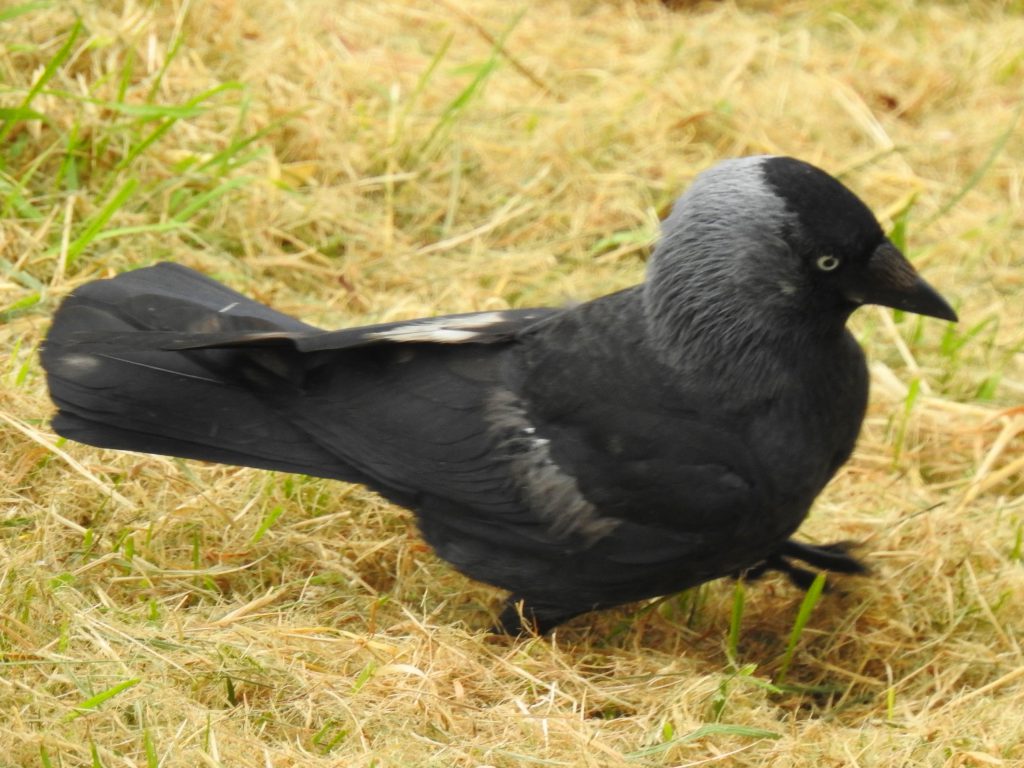
The Jackdaw (Corvus monedula) is a small corvid species, measuring about 13 inches in length and weighing around 7.5-9.5 ounces. They have a distinctive black plumage with a grey neck and head, and their eyes are pale blue or greyish-white. In flight, they display a short, square-shaped tail and pointed wings that are dark brown in color. The juvenile Jackdaw is duller and has a brownish tinge to its plumage.
The Jackdaw is a resident bird in most parts of its range, which covers Europe, Asia, and North Africa. They prefer open habitats such as farmland, woodland edges, and urban areas, and they are commonly seen perched on rooftops or feeding in fields. However, some populations migrate during the winter months to warmer regions in search of food. In the UK, some individuals from Scotland and northern England may move southwards to overwinter in milder regions.
One of the distinguishing features of the Jackdaw is its distinctive call, which sounds like “chak-chak” or “kyow-kyow.” They are social birds that typically live in small flocks of around 20 to 50 individuals, although larger flocks of several hundred may form during the non-breeding season. They are also known to form monogamous pairs, and they breed in cavities such as tree holes, buildings, or rock crevices. Their breeding season typically starts in March and continues until May, and they usually lay between 4-6 eggs.
Despite their widespread distribution and adaptability, the Jackdaw population has declined in some regions due to habitat loss and persecution. In the UK, they are a protected species under the Wildlife and Countryside Act of 1981, which makes it illegal to kill or disturb them without a license. However, they are still considered a pest by some people, especially in urban areas where they can cause damage to buildings and crops. Nonetheless, the Jackdaw remains a fascinating and intelligent bird that is always a joy to watch and admire.
